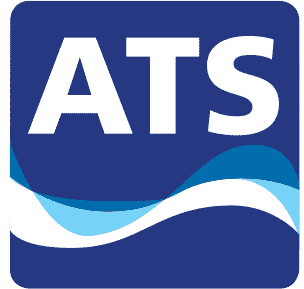
ANSI just surpassed 100 years since its inception. Before the name change, ANSI (American National Standards Institute) was the American Engineering Standards Committee (AESC). However, it wasn’t until 1919 that AESC approved its first standard on pipe threads. Ever since, it’s been the standard for U.S. safety on the job, undergoing numerous changes, with the latest in 2014, nearly a hundred years after its creation. Learn about the ANSI timeline and how a century of safety standards paved the way for the protection of workers worldwide.
ANSI Timeline for Safety Standards
Before we delve into the timeline of ANSI and how it’s kept workers safe on the job site – including adding safety shower/eyewash units – let’s discuss how it began. In 1916, five organizations, comprised of core members of the United Engineering Society (UES), developed ASCE. They invited the U.S. Departments of War, Navy, and Commerce to join them as founders. It wasn’t well utilized until 1919 with its first approval. Over the years, the organization evolved to ensure safety standards all over the world. Here is a timeline of ANSI.
1918-1931
- 1918- ANSI (formerly AESC) is established with one executive, Clifford B. LePage and an annual budget of $7,500, which was provided by the founding bodies.
- 1919 – ANSI approved its first pipe thread standard.
- 1920 – Began the coordination of national safety codes to replace laws and recommended practices.
- 1921 – The first American Standard Safety Code was approved, covering the protection of the heads and eyes of industrial workers. They went on to subsequently approve national standards in electrical, mechanical engineering, mining, construction, and highway traffic fields.
- 1926 – Hosted the conference that led to the creation of the International Standards Association (ISA). This organization remained active until World War II, which later became the International Organization for Standardization. (ISO)
- 1928 – AESC renamed the American Standards Association (ASA)
- 1931 – The U.S. National Committee of IEC became affiliated with ASA.
1940-1970
- 1941 – Enacted World War II War Standards Procedure, which helped to accelerate the development and approval of new and revised standards needed to boost industrial effectiveness for war production.
- 1946 – ASA joined with the national standards bodies of 25 countries to form an international organization devoted to standardization.
- 1950’s-1960’s – In the fields of nuclear energy, information technology, and material handling and electronics, ASA helped industry and government anticipate safety standards.
- 1966 – ASA reorganized as the United States of America Standards Institute (USASI) for broader use in developing and approving standards, helping strengthen U.S. leadership internationally.
- 1968 – A Certification Committee was formed to oversee an independent test to comply with an approved American National Standard.
- 1969 – Adopted its present name of ANSI
- 1970 – ANSI formalized a public review process called the ANSI Board of Standards Review (BSR), becoming one of the most significant innovations in the institute’s history.
1970-2014
- 1976 – Occupational Safety and Health Administration (OSHA) and ANSI established a joint coordinating committee. This pact allowed for private-public sector voluntary standards events that affect safety and health in the workplace.
- 1987 – The world’s largest known standardization committee was born, called the ISO/ICE Joint Technical Committee in Information Technology or JTC 1.
- 1989 – ANSI reaches Eastern Europe, Pacific Rim, South and Central America, and the Middle East.
- 1991 – Discussions between Mexico, Canada, and ANSI Federation members were initiated for a North American Free Trade Agreement or NAFTA.
- 2000 – The National Standards Strategy for the United States (NSS) was approved. It laid out a roadmap for the community and provided an outline of key principals with the National Conformity Assessment Principals published in 2002.
- 2009 – ANSI created and implemented the Standards Boost Business campaign with other companies and organizations from the standardization community.
- 2014 – ANSI established Workcred, which focuses on workforce development and credentialing issues.
Call ATS ShieldSafe® for Safety Shower Compliance
ANSI standards were created to help protect safety workers. We carry fully compliant safety showers. If you’re concerned about being ANSI compliant with your safety shower, contact ATS ShieldSafe’s experts at 800-747-9953. We can schedule your free consultation and help you with safety standards compliance. Contact us today.


